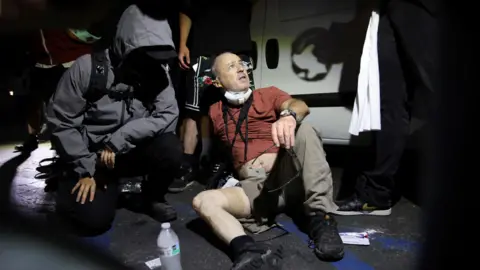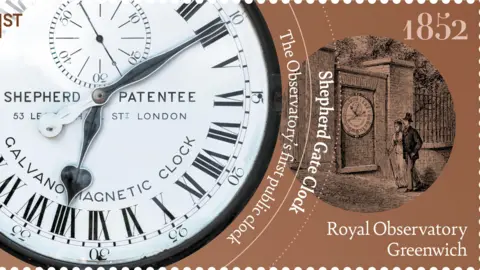- India
Middle East latest: Palestinians struggle to find food in Gaza; Israeli strike in Beirut kills 4
时间:2010-12-5 17:23:32 作者:Numbers 来源:Sports 查看: 评论:0内容摘要:While most penguin species face some level of threat, some are at greater risk than others. One of them is the African penguin, which is considered by the International Union for the Conservation of Nature (IUCN) to be “critically endangered.” Their population has decreased dramatically over the past 40 years due to a variety of threats, including humans who are overfishing their food sources.While most penguin species face some level of threat, some are at greater risk than others. One of them is the African penguin, which is considered by the International Union for the Conservation of Nature (IUCN) to be “critically endangered.” Their population has decreased dramatically over the past 40 years due to a variety of threats, including humans who are overfishing their food sources.
Lisbon is one of the most welcoming cities in Europe, especially for first-timers. The locals in tourist areas are warm, easygoing, and often understand basic English as well.The city is built on hills, but its compact layout, metro system, and much-photographed trams make getting around manageable, even if you're not accustomed to the elevation.

What makes the stay delightful is that the pace here is slower than in most major capitals. In Lisbon, explore the, enjoy local music (like Fado), and catch incredible views from the many miradouros (viewpoints) around town.Lisbon also offers great value for money compared to its neighbor Spain. You’ll find excellent food for a fraction of what you’d pay in major Spanish towns. The accommodation here is also more budget-friendly, which will make your wallet happy.

For day trips, Sintra is a must-see with its palaces and fairytale architecture. Cascais, Évora, and Óbidos are also popular and easily reachable from your base in Lisbon.Affordable, scenic, and packed with things to do and perfect for budget-conscious first-time travelers.

Budapest is a strong pick for first-timers who want to experience history, culture, and nightlife without breaking the bank. The city is well connected by metro, trams, and buses, and it’s relatively easy to figure out even if you’ve never used public transport in Europe before.
English is widely spoken, especially among younger locals and in tourist-facing spots. The people are helpful, and the general vibe is laid-back and unpretentious across the city.News of Amber’s escape was posted on social media and around the local area. Numerous sightings were reported and pictures and video clips sent to the rescue service, which enabled them to map Amber’s movements.
“Within the first three weeks she was probably only travelling around 10 miles from where she had gone missing but in different directions,” said Collins.Pictures and video clips that they received enabled KS Rescue Angels to set up cameras and feeding stations.
“We were doing this for three or four weeks and we always seemed to be one step behind her. Then it all went dark around the four-week mark and we stopped getting any reliable sightings.”Collins believes this was probably when Amber travelled 30 miles to the coastal town of Poole. Locals had reported sightings there of a stray dog but it was too far away for anyone to make the connection.
- 最近更新
- 2025-07-07 08:39:20Amid Iran market risks, watch gas as well as oil
- 2025-07-07 08:39:20Maps show heat wave forecast as much of U.S. swelters
- 2025-07-07 08:39:20Katie Couric MediaNot sure what to bring to the barbecue? Hatch chile mac and cheese is the answer
- 2025-07-07 08:39:20Further disruptions to global supply highlight urgent need for Europe to diversify energy sources
- 2025-07-07 08:39:20Liverpool car ramming casts ‘dark shadow’ over victory parade
- 2025-07-07 08:39:20The Genius Myth — or why it’s wrong to lionise the likes of Elon Musk
- 2025-07-07 08:39:20Argentinian judge withdraws from a negligence trial about Maradona’s death
- 2025-07-07 08:39:20Thousands of people celebrate toddler’s cancer recovery in Istanbul
- 热门排行
- 2025-07-07 08:39:20our guide to guest drivers and car insurance
- 2025-07-07 08:39:20Maps show heat wave forecast as much of U.S. swelters
- 2025-07-07 08:39:20our guide to age-smart ways to save on car insurance
- 2025-07-07 08:39:20Israel says 3 killed in Iranian barrage after Trump announces ceasefire
- 2025-07-07 08:39:20Bill Nighy, Mathew Horne, WWE’s Jordynne Grace Board Fantasy Film ‘Welcome to Paradis…
- 2025-07-07 08:39:2012 of our most popular Fourth of July recipes
- 2025-07-07 08:39:20The 1-Minute Tomato Sandwich I’m Having All Summer Long
- 2025-07-07 08:39:20Sprawling Heat Dome Could Smash June Records In Northeast, Midwest, Including 100s In…
- 友情链接
- Trump's massive import taxes haven't done much economic damage — yet Morgan Wallen Music Review: 'I'm The Problem' The Scottish Highlands offer visitors a mix of history and modernity Four-legged investigators sniff out spotted lanternfly eggs to slow the spread of invasive pest Howard scores 33 points, Gray adds career-high 28 to help Dream rally past Storm, 94-87 Pro Picks: Chiefs, Bills, Lions and Eagles will advance to the conference championships Like food, fashion and more, home decorating has a seat on the 'slow' train 3 astronauts return to Earth after 6 months on China's space station Trump gives Elon Musk an Oval Office sendoff Some garden trend predictions for 2025 Harrison Ruffin Tyler, grandson of 10th US president, dies at 96 Streaming in May 2025: Joe Jonas and Nicole Kidman 3 patients killed in a fire at a hospital in Germany Despite the 'constant noise' surrounding Aaron Rodgers, Mason Rudolph happy to be back in Pittsburgh Here's why raw milk drinkers need to be concerned about bird flu in US dairy cows Papuan women's mangrove forest in Indonesia is increasingly threatened by development and pollution Noteworthy and influential people who've died this year US says it's working to return a Guatemalan man deported to Mexico Israeli airstrikes in Gaza kill 70 people, including 22 children, health officials say Ursula von der Leyen honored with award for contributions to European unity Novak Djokovic gets a toe taped up in French Open win 'Eminent Jews' review: David Denby profiles great figures Red Bull driver Max Verstappen wins F1's Emilia-Romagna Grand Prix to end Piastri's streak Frustration and slow driving at Monaco GP as F1 rule change backfires What to stream in TV, movies and music in late December 2024 Jet engine maker Pratt & Whitney reaches tentative agreement with striking machinists With flicks of the wrist, Rio Carnival's drum maestros keep everyone locked in on the beat As Thailand approves same-sex marriage, a couple celebrates feeling freed Miley Cyrus' 'Something Beautiful' review: A return to form Manitoba's train is a lifeline for many towns. Now tourists are also discovering the route
